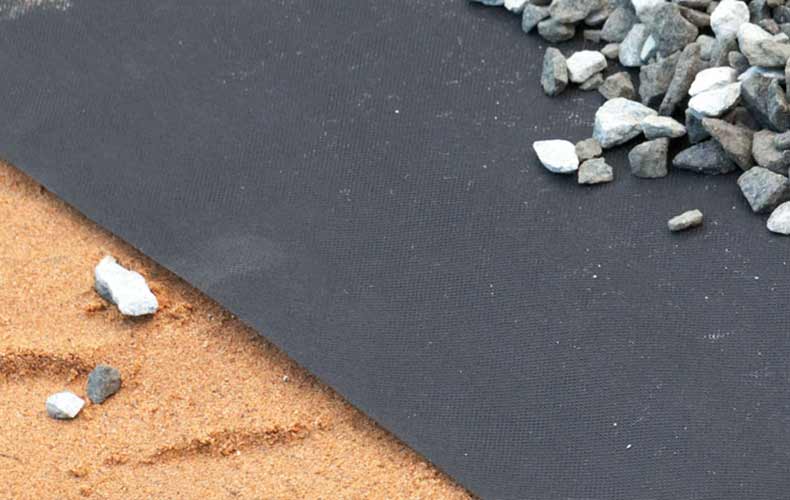The Importance of Using Geotextile Membranes
You might have heard the term “geotextile membrane” or “Terram membrane” be thrown around when speaking about building patios, driveways, streets and highways but why are these used and should you use them?
What are geotextile membranes?
Geotextile membranes are sheets of permeable fabric used in drainage applications, landscape projects and ground engineering to separate, filter, reinforce, drain and/or protect the soil. Also known as geotextile, geotextile fabric or geotextile terram, geotextile membranes are available in two main fabrics: woven geotextile fabric and non-woven geotextile fabric.


Woven geotextile is a general-purpose fabric which can be used for a variety of applications, including land drains, paving, driveways, equestrian arenas, weed control and much more. Non-woven geotextile can also be used for various purposes, from driveways to land drains. However, non-woven geotextile fabric should not be used for weed prevention due to the porosity of the fabric.
Why use geotextile membrane?
Essential for unpaved roads.
Peter G. Nicholson, stated in Soil Improvement and Ground Modification Methods that “Geotextiles have played an important role in providing a working solution for construction or improvement of secondary unpaved roads, haul roads, access roads, and roads in developing regions.”
Peter G. Nicholson explains that in most cases, geotextiles were placed between soft, fine-grained subgrade soils, with stone aggregates or sand above. He also highlighted the improved long-term performance of unpaved surfaces by the separation function of geotextile, which keeps the aggregates from mixing into the subgrade.
Separating soil layers.
The most common and obvious benefit of using geotextile fabric is soil separation. Before geotextile technology, the main struggle that the construction industry faced was mixing soil layers during the construction process. For instance, when building roads, gravel applied to the surface would usually sink into soft subsurface materials. This issue was eliminated with the evolution of geotextile technology. When installed properly, geotextile fabrics reduce mixing and contamination of soil layers.


Soil filtration.
Geotextiles are designed to solve various geotechnical problems, including the clogging of land drainage systems. When used for filtration purposes, geotextiles create a permeable layer that allows water to filter through whilst preventing fines, silt and larger stones from passing through.


Improving soil stabilisation.
Geotextile membranes can also be used for soil reinforcement and stabilisation. Geotextile provides strength to the soil it is reinforcing. These are often used for embankments, steepened slopes and retaining walls.
When constructing banks, a layer of fill material is laid followed by a layer of geotextile membrane. This process is repeated until the bank is at the correct height. The layers of geotextile prevent lateral movement of the fill layers and help stabilise the bank. This also allows the formation of higher embankments.
Overall, geotextile membranes improve soil characteristics before roads, highways, parking lots and other structures are built. If you require assistance in choosing the right type of geotextile fabric to suit your project, do not hesitate to contact our team. We can be reached on mobile at 01234 831108 or via email at info@mainlandaggregates.co.uk.
